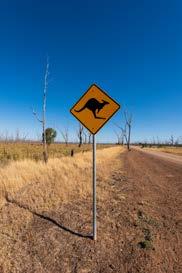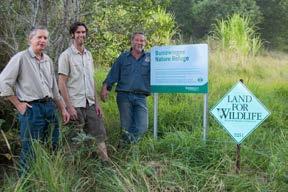The Power of Wildlife Signs in Visual Communication



 Julia Bianchi
Julia Bianchi
Canva explains visual communication as a process of using visual elements to convey ideas, information, and data. Visual elements include graphs, typography, maps, and signs’. And we are constantly dealing with visual communication, from the emoji in messages to the poster in the bathroom that explains the correct protocol for washing hands.
Under the Department of Transport and Main Roads in Queensland in the 8th topic of their manual, signs are generally installed in advance of an area of a roadway where there is an increased likelihood of an encounter with wildlife. An encounter on the roadway can create a dangerous situation for both the road users and the wildlife, which may result in a fatality.

Content 1. Introduction 2. Issues and ideas in the development of visual communication 3. Historical and contemporary visual communication 4. Evaluation 5. What do YOU think? 6. Conclusion
sign
drivers
the road.
Introduction A
alerting
about kangaroos on
Unlike road signs, the Land for Wildlife sign is the visual communication form of the voluntary property registration scheme for landowners who wish to manage areas for biodiversity and wildlife habitat. A free project that does not alter anything in the land registration created by the Community Environment Network.

In the following chapters, the book dives into the issues and ideas in the development of visual communication focusing on three challenges that designers can face with creating content; followed by the history of visual communication and an evaluation of its importance; a chapter about the writers’ opinion, ending with a conclusion.
in the Development of Visual Communication
How can we ensure the content we’re creating makes the impact we need? These are three core challenges at the root of this problem, according to the visme website.
•
Challenge 1: Limited Attention
Introduction Issues & Ideas
The first challenge we need to overcome is the limited attention span of your audience. The good news is that visual communication helps us to transform our content into a distraction-proof, problem-solving tool. Because the likelihood of distraction online is often correlated with the quality of visual information in your content, the use of visuals helps them refocus and return to the main ideas in your content.
•
Challenge 2: Remembering the Content
The second challenge businesses face with readers is making sure that you stick out in their memory. Additionally, strong visual communication will increase reading comprehension and memory while your readers are still reading the content. It is critical because it allows them to experience more insights and epiphanies.
•
Challenge 3: Understanding if the Content is Meaningful
The third challenge to focus on when it comes to visual communication is whether or not your readers will find the content meaningful. We want to pay attention to things like colour, size, shape, lightness, and darkness.
Sign warning about unfenced animals in the road.
Historical & Contemporary
Communication has existed for millions of years, according to the UJET Team, and it can be verbal, visual and even physical, but all have the same purpose - to convey a message.
Visual communication started with pictographs. A pictogram or pictograph is a symbol representing a concept, object, activity, place or event by illustration. Pictography is a form of writing whereby ideas are transmitted through drawing. It is the basis of cuneiform and hieroglyphs.
Whereas an ideogram or ideograph is a graphical symbol that represents an idea, says the History of Visual Communication website. Examples of ideograms include wayfinding signage, such as in airports and other environments where many people may not be familiar with the language of the place they are. If you go further back, written language is a collection of images that a group of people have agreed to have specific meanings.
•
Arts and science
Paintings can capture the essence of subjects. Instead of relying on a verbal or written description, people were able to see the subject at hand. In science, biological drawings have existed for thousands of years and became tools for scientific communities and helped shape science.
•
Photography
Instead of relying on the individual’s perspective, a photograph captures a moment in time.
•

Animation and filming
Animation today is a sequence of images to create motion, but in the past, it was a sequence of images that could be read and understood as a story. Film might have evolved from film to digital recording, but the core ideas have never changed. It is possible to share a lot more information with a video.
In the contemporary world, we’re constantly consuming digital media content, from scrolling social media in our phones to that tiny logo image next to the bottom signature of your work colleague. The way visual communication works nowadays is always changing and improving, but one thing that hasn’t changed is the way we perceive road signs. They’ve kept the same alertful colours with a short and direct message, easy to undertand.
Above, Charles Darwin’s Voyage of the Beagle.
The primary reason behind the booming prevalence of visual communication is the fact that the majority of us realize that the use of visual communication material is a lot more effective way to convey information. So, Digiaide came up with these four keys to why it is essential to effectively communicate a meaningful message.
Evaluation What do YOU think?
1. Information is best retained when it is communicated visually: Using relevant images has been proven to assist the audience in recalling the content more successfully from a scientific standpoint.
2. Saves time by allowing messages to be relayed more quickly: Keeping your materials visually rich is a reliable technique to get your point through in less time.
3. Ensures the delivery of a uniform, unambiguous message: When there’s a lot of text in an email, it’s easy for it to be lost.
4. Aids in the creation of a unified, shared experience: Many firms have set brand colours that should be utilized in all marketing activities and a logo.
Visual communication is a valid and hugely important way of giving someone or a group of people a message. It is direct, subjective and fast – and if done correctly, it will give the right message, evoke the correspondent emotions and stick in the receivers’ mind for a long period, making it easier to recognise it in the future and connect with their own experience. We see how it works with pictographs and ideographs, it is undoubtedly easy to find our way in airports or fast-read signs while driving.
In the case of wildlife signs on the roadway, it’s understandable that the reason they are placed is to avoid collisions with bigger animals that may cause damage and accidents. The guideline of signing and pavement making previously mentioned that wildlife warning and information signs are not specifically intended to perform an animal preservation role, and research to date indicate that they are not particularly effective for this purpose.
The Department of Transport and Main Roads manual affirms that if the preservation of animals is considered to be critical for the survival of the local animal population, other traffic management and animal management treatments will be required (signs alone are not adequate).
In the other hand, Land for Wildlife sign is almost like the logo you’ll see in private properties that are taking action to protect the fauna and flora diversity. In my experience, I first encountered the ‘Land for Wildlife’ sign during a trip to Ayers Rock. I didn’t know exactly what was behind the program but I still picked up that that land had an environmental significance. This experience shows that the use of visual communication material can be a more effective way to convey information.

Conclusion
People rely on visual communication to overcome language barriers and to capture and understand any message faster. It helps the designer to reach the audience more precisely, and to make the audience understand the information easier - hence in roadway signs it’s usually an image or short text we see.
The topics analysed in this book were the wildlife signs on roads preventing collisions between animals and drivers, traffic signs in areas of wildlife conservation and the Land for Wildlife program sign.
Land for Wildlife team with Land for Wildlife sign.

Photo from my trip to Uluru, Ayers Rock in 2020.
The challenges designers have to deal with in current times are not exactly related to the objective role of road management and safety present in wildlife signs. However, the last challenge which is understanding if the content is meaningful can be focused on the CEN program of Land for Wildlife. Additionally, visual imagery and the concepts of design are present in all kinds of signs, making it easier for the receptor to get the message by its colour, size, shape, lightness and darkness.
Bibliography
“A History of Visual Communication.” UJET, 7 Feb. 2019, https://ujet.cx/ blog/a-history-of-visual-communication.
Canva. “The Value of Visual Communication in Business (and Beyond).” Canva, Canva, https://www.canva.com/learn/visual-communication/. Accessed 2 Jan. 2023.
“History of Visual Communication | Ideograms.” Viscomhistory, https:// www.historyofvisualcommunication.com/02-ideograms#:~:text=A%20 pictogram%20or%20pictograph%20is,ideas%20are%20transmitted%20 through%20drawing. Accessed 2 Jan. 2023.
“Home - Land for Wildlife.” Land for Wildlife, https://www.lfwseq.org.au/. Accessed 2 Jan. 2023.
“Land For Wildlife.” CEN, https://www.cen.org.au/projects/land-for-wildlife. Accessed 2 Jan. 2023.
“Visual Communication - Definition, Examples and Importance - Digiaide. Com.” Digiaide.Com, 8 Jan. 2022, https://digiaide.com/visual-communication.
“Volume 3 - Signing and Pavement Marking (Department of Transport and Main Roads).” Home (Department of Transport and Main Roads), https:// www.tmr.qld.gov.au/business-industry/Technical-standards-publications/ Traffic-and-Road-Use-Management-manual/Volume-3. Accessed 2 Jan. 2023.
Published in 2023. First Edition.



 Julia Bianchi
Julia Bianchi





